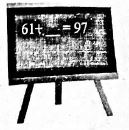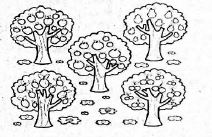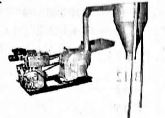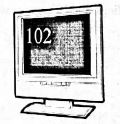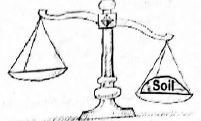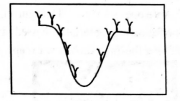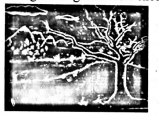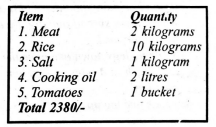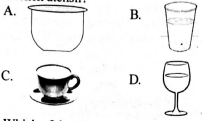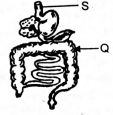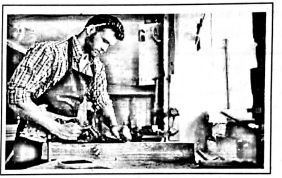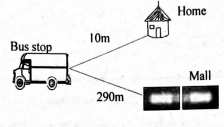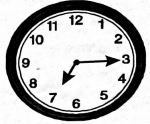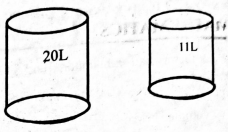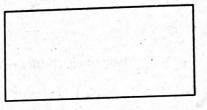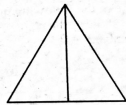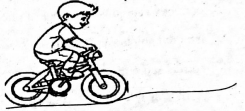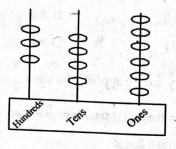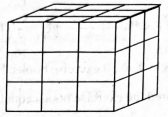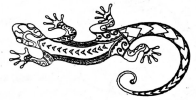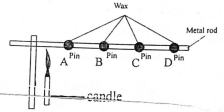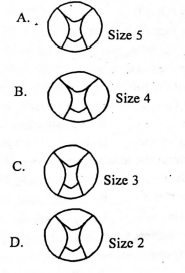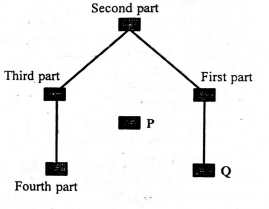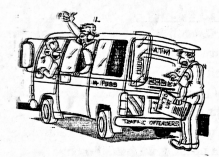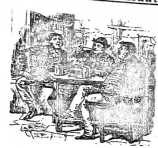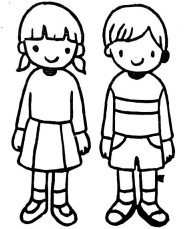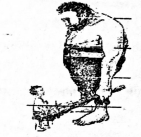Stella
Mathematics Questions and Answers - Grade 4 Opener Exams Term 1 2023 Set 2
MATHEMATICS
- A team was awarded 560 balls. What is this number in words?
- Five sixty.
- Five hundred and six.
- Fifty six zero.est A F
- Five hundred and sixty.
- Grade 4 learners were to rearrange some numbers from the largest to the smallest. Which of the following numbers are correctly arranged?
- 125, 29, 208, 187,710
- 710, 208, 187, 125, 29
- 125, 187, 29, 187,710
- 29,125,187, 208, 710
- Tim recorded his weather changes for the month of April and November. How many days did he record altogether?
- 30
- 31
- 62
- 60
- A school has a population of 458 pupils. Which one of the following shows the place value of each digit?
- Janet made the pattern below in a skipping game. Which number will she skip to next? 102, 107, 112..
- 115
- 117
- 120
- 119
- Kamau bought 495 bags of maize. He later bought 10 more bags. How many bags did he have altogether?
- 500
- 485
- 505
- 495
- John had 126 bricks. He sold 35 bricks.. How many bricks remained?
- 91
- 251
- 51
- 151
- Albert bought 45 books in a book. He packed them in boxes. How many books were in each box?
- 54
- 36
- 5
- 6
- John had 6 litres of milk. He used 4 litres to make tea. How many litres did he remain with?
- 10L
- 2L
- 5L
- 4L
- Precious was sent to the market with sh. 200. She bought tomatoes for sh. 80. How much change did she remain with?
- Sh. 280
- Sh. 120
- Sh. 100.
- Sh. 20
- Mark walked from the staffroom to the class covering a distance of 12 metres. He then went to the dining hall a distance of 6 metres. What is the total length he walked?
- 14m
- 6m
- 18m
- 4cm
- A teacher displayed the clock face below. What is the time in the morning?
- 1:10am
- 10:05 am
- 10:01am
- 10:10am
- A teacher wrote the following: sum on the chalkboard. Fill in the missing number.
- 24
- 26
- 33
- 36
- Suku eats 5 eggs in a day. How many eggs does he eat in 10 days?
- 15
- 510
- 50
- 5
- Lucy had a piece of sugarcane. She shared it equally among 4 friends. What fraction of the sugarcane did each friend get?
- 4
- 1/4
- 1
- /2
- Paul drew a figure with four equal sides. Which figure did he draw?
- Rectangle
- Triangle
- Oval
- Square
- A bus took 8 hours 35 minutes to move from Kisumu to Nairobi. The bus then took another 1 hour 21 minutes to move from Nairobi to Machakos. How long was the whole journey?
- 9hrs 56 mins
- 9hrs 6mins
- 10hrs 06mins
- 7hrs 24mins
- Purity had 3 flash cards. She divided each flash card into four equal parts. How many equal pieces did she have altogether?
- 12
- 4
- 7
- 15
- John drew a triangle strip and shaded an eighth. Which one correctly shows an eighth?
- Alex had a certain number of pencils. She shared them among his seven children. If each child got 3 pencils, how many pencils did Alex have before?
- 14
- 12
- 15
- 21
- A teacher brought 35 mangoes. He shared them equally among 4 boys. How many mangoes did he remain with?"
- 3
- 2
- 8
- 31
- Juma wrote numbers between 56 and 64. Which one of the following numbers is not part of the pattern?
- 54
- 63
- 58
- 60
- Linda's farm has 234 avocado seedlings, and 102 orange seedlings. How many seedlings are on the farm?
- 132
- 136
- 336
- 332
- A posho mill produces 19 kilograms of maize flour and 21 kilograms of millet flour. How many kilograms does it produce altogether?
- 2kg
- 39kg
- 41kg
- 40kg
- Triza reads 34 pages of her favourite storybook on Monday, 23pages on Tuesday and 11pages on Wednesday. How many pages did she read for the three days?
- 68
- 57
- 34
- 35
- A screen showed number 102.
Which of these numbers comes before this number?- 100
- 101
- 103
- 104
- Kim was weighing various masses of items in his store.
If he was using Ikilogram of sand soil as his unit measure, which of these masses is equal to the unit he is using?- 2 kilograms of flour.
- 3 kilograms of feathers.
- 1 kilogram of cotton.
- Zero kilograms of sugar.
- Chacha had 4 loaves of bread. He shared half of the loaves he had to his friends. How many loaves did he remain with?
- 4 loaves
- 2 loaves
- 1 loave
- 8 loaves
- Gerry had 2 baskets. One had 12 oranges and the other had 16 oranges. How many oranges did she have altogether?
- 28
- 4
- 18
- 38
- The number of pens in a box were 24. If 13 were removed, how many pens remained?
- 37
- 21
- 11
- 10
MARKING SCHEME
MATHS
- D
- B
- D
- A
- B
- C
- A
- C
- B
- B
- C
- B
- D
- C
- B
- D
- A
- A
- D
- D
- A
- A
- C.
- D
- A
- B
- C
- B
- A
- C
Creative Arts and Social Studies Questions and Answers - Grade 5 Opener Exams Term 1 2023 Set 5
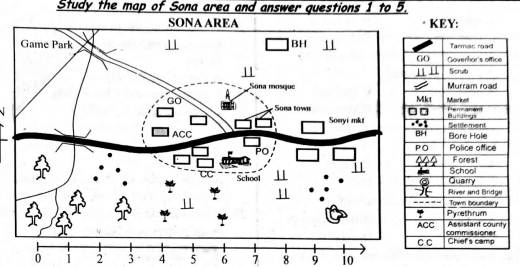
- The market at the eastern side of Sona area is called
- Sonyi market
- Sona market
- Katu market
- Yala market
- Sona Area is headed by
- President
- Governor
- Chief
- Assistant chief.
- Which one of the following physical features is found in Sona Area?
- River
- Forest
- Road
- Church.
- The people of Sona Area are
- Muslims
- Pagans
- Hindus
- Christians.
- The people of Sona Area get water from the
- market
- river
- chief's office
- church.
- The physical feature drawn below is
- river
- valley
- pond
- mountain.
- Most rivers start from
- highlands
- rain
- valley
- lowlands.
- Kenya is one of the African countries. How many counties does it have?
- 47
- 42
- 45
- 17
- In Kenya, Jamhuri Day is celebrated on
- 1st January
- 20th October
- 1st April
- 12th December.
- What does the white colour of the Kenya national flag represent?
- Wealth.
- The colour of the people of Kenya
- Vegetation.
- Peace.
- Our county is headed by a
- speaker
- M.C.A
- governor
- President.
- Areas with many people are said to be ______________________ populated.
- densely
- sparsely
- linear
- unevenly
- The Maasai community get their food mainly from
- fish
- camel
- dogs
- cattle.
- Natural features were made by
- woman
- human beings
- God
- man.
- Which one of the following is a domestic animal?
- Lion
- Camel
- Antelope
- Squirrel.
- The following materials are used in drawing the diagram below except
- Wax crayon
- Soap
- Water
- Eraser.
- The process of adding different colour paints to create a picture or to make a decoration is called
- smudging
- painting
- collage
- mixing.
- When adding black to another colour, a ________________ of the colour is created.
- shade
- tint
- paint
- blend.
- Weaving technique is used to make the following except
- mats
- shoes
- hats
- sweaters.
- We get hides from the following animals except
- cattle
- buffalo
- camels
- hare.
- The following groups contain natural materials which can be used in basketry except
- flexible sticks and reeds
- palm leaves and nylon threads
- elephant grass and raffia
- bamboo stem and banana fibres.
- Which of the following items is not a pottery item?
- Ceramic plates.
- Flower vases.
- Earthen pots.
- Cooking stick.
- Which method of decoration has been used on the pottery item below?
- Stamping
- Incising
- Embedding
- Piercing.
- Which of the following materials is not used when making a glove puppet?
- Adhesives
- Cutting tools
- Sticks/rod
- Gloves.
- The highness or lowness of sound in music is called
- pitch
- dynamics
- rhythm
- tempo.
- A descant recorder has__________________ holes.
- 3
- 4
- 7
- 8
- The instrument below is called
- drum
- obokano
- nyatiti
- orutu.
- Taa has ______________________________.
- one long beat count
- half beat count
- two short counts
- two full beats
- Which of the following instruments is blown to produce sound?
- Drum
- Descant recorder
- Jingle
- Guitar
- The instrument in the picture below can accompany which dance?
- Folk
- Sacred
- Modern
- Wedding
- Which part of a drum produces sound?
- Tuning lug
- Pegs
- Laces
- Membrane.
- A person who leads performance in music is called
- instrumentalist
- leader
- soloist
- singer.
- The nationalan them is commonly sang in our country Kenya. Which type of song is it?
- Lullaby
- Tropical
- Action
- Patriotic.
- Which one is not an element of a folk dance?
- Speed
- Energy
- Length
- Tempo.
- Which one of the following can be worn by people performing a tradition dance in school?
- Skins
- Old leaves
- Sisal fibres
- Vests.
PART 2: Choose a section you have prepared for. Each section is 10 marks
CHRISTIAN RELIGIOUS EDUCATION
- People feel different emotions. Which one of the following is a positive emotion?
- Anxiety
- Anger
- Happiness
- Fear.
- 'Do not let your anger lead you into sin'.
The Verse comes from the book of- Proverbs
- Ephesians
- Genesis
- Numbers.
- Who among the following abused Tammar sexually?
- Jonadab
- David
- Amnon
- Saul.
- God made all things on earth. Which attribute best describes Him? He is
- sole creator
- holy
- caring
- loving.
- Learners were counting books in the Bible. How many books are in the New Testament?
- 39
- 27
- 66
- 25
- Mwikali was going through the Bible. The book she got interested in was the third book in the Bible. Which book was it?
- Leviticus
- Luke
- Numbers
- Exodus.
- Which King sent Baalam to curse the Israelites?
- Saul
- David
- Balak
- Solomon.
- Abraham was in his homeland when God called him. What was the name of his homeland?
- Ur
- Haran
- Egypt
- Caanan.
- Promises are things people make and fulfil them. Which promise was Abraham not promised?
- Descendants
- Wealth
- Health
- Curses.
- Jesus' birth is unique because of the following except
- He was to be born of a virgin
- He would be a king
- it was announced by an angel
- He was born at nine months.
- Mwamito was so thankful to her mother after she was given a gift. How many lepers from the Bible were thankful like Mwamito?
- 5
- 3
- 1
- 10
- The parable of the mustard seed teaches about
- kindness
- God's Kingdom
- humility
- farming.
- Which one of the following is the greatest gift of the Holy spirit?
- Joy
- Peace
- Patience
- Love
- Christians were taught to pray through the Lord's prayer. Which of the following lines is not found in the Lord's prayer?
- Your kingdom come.
- Give us our daily bread.
- Creator of heaven and the earth.
- Forgive us our sins.
- Among the disciples of Jesus, who was Simon's brother?
- Andrew
- Philip
- Peter
- John.
ISLAMIC RELIGIOUS EDUCATION
- Saum is the _________________________pillar of Islam.
- second
- fourth
- fifth
- third
- Complete the following Hadith of the prophet (SAW) said "Allah is one and He loves...."
- Quran
- Hadith
- Witri
- Muslim.
- The following are forms of sadaqa. Which one is not?
- Dhikr.
- Smiling for Muslims brother and sister.
- Visiting the sick.
- Playing football.
- Which one of the following is not a virtue learnt from observing saum?
- Patience
- Israaf
- Generosity
- Self-control.
- Which one of the following does not nullify swalah?
- Shifting from Qibla
- Laughing
- Exposing aura
- Standing.
- 'Muslims should worship the Lord of Al Kaaba' This is described in surah
- Kaafirun
- Nasr
- Qadar
- Quraish.
- Which questions will not be asked by Almighty Allah on the day of judgement?
- Youthful
- Wealth
- Knowledge
- Academics.
- Allah (SWT) is ever living means
- Malik
- Hayyu
- Jabar
- Samad.
- Angels were created from
- light
- water
- clay
- harshi
- Standing upright in swalah is called
- sujud
- Rukuj
- takbira
- itidaal.
- Which one of the following is a heavy Najis
- pus
- stool
- pig
- vomit.
- Which angel is responsible for removing our souls?
- Jibril
- Ridhwan
- Izrail
- Atid.
- The fear of Allah SWT is called
- Tawakul
- Taqwa
- Twahara
- Tawba.
- Which one of these prophets is an ulul Azm?
- Yusuf
- Nuh
- Saleh
- Idris.
- We must offer five daily prayers on time is the teaching of surah
- Ikhlas.
- Falaq
- Maun.
- Zilzala.
MARKING SCHEME
- A
- B
- A
- A
- B
- B
- A
- A
- D
- D
- C
- A
- D
- C
- B
- B
- B
- A
- B
- D
- D
- D
- B
- A
- A
- B
- C
- B
- B
- A
- D
- C
- D
- C
- C
C.R.E
- C
- B
- C
- A
- B
- A
- C
- B
- D
- D
- C
- B
- D
- C
- A
I.R.E
- D
- D
- A
- C
- C
- D
- D
- B
- A
- A
- D
- B
- C
- B
- C
Integrated Science Questions and Answers - Grade 5 Opener Exams Term 1 2023 Set 5
QUESTIONS
- Soila was washing her coloured handkerchief. She added salt to the watem she was using. What was the use of salt when washing the handkerchief? To
- brighten the colour
- remove mucus stains
- prevent using soap
- dry easily.
- When doing laundry, we iron clothes after drying them. The main reason why we iron clothes is to
- make fun
- pass time
- remove creases
- remove dirt.
- After Harun sorted out his clothes, he repaired the torn ones before washing them. Why do we repair clothes before wash.ng them? To
- prevent further tearing
- make them look smart
- use less soap
- fasten drying.
- A tailor had the item shown below in his workshop. What is its function? To
- protect the finger while sewing
- fix the button well
- thread the niddle
- repair torn clothes.
- Juma wanted to buy some buttons from the shop. He had to consider all the following factors except
- shape
- colour
- colour of the garment
- size of the clothes.
- It is healthy for children to play games. All the following games are played in the society except one. Which one is it?
- Tag of war
- Hide and seek
- Soccer
- Wrestling.
- One afternoon, Joan was feeling unwell. What was the best thing for her to do?
- Lie on the bed and relax.
- Report to the police.
- Inform her parent.
- Isolate herself.
- After his exams, Ali was to join high school. The best type of shoes for him to buy for school is shoes made using
- plastic
- leather
- canvas
- cotton.
- Which type of fuel was mostly used in the traditional times?
- Firewood
- Gas
- Electricity
- Paraffin
- Alice prepared the following shopping list
What was missing in the shopping list?- Cents
- Capital
- Price of the items
- Balance.
- Salim was sent to buy a packet of maize flour from a grocery shop. What was he supposed to consider when buying the item?
- Manufacturing date.
- Colour of the packet.
- Size of the grocery shop.
- Expiry date of the maize flour.
- The following are reasons for preserving milk except to
- make it last longer
- make it easy to store and transport
- increase wastage
- prevent it from getting spoilt.
- Which of the following is not a fragile kitchen utensil?
- Which of the following foods is not prepared by boiling?
- Irish potatoes
- Chapati
- Eggs
- Maize.
- Which of the following is not a method of cooking food?
- Shallow frying
- Boiling
- Deep frying
- Slicing.
- Below are steps to perform the headstand.
- Keep the arms straight and hold the balance.
- Place one foot in front of the other.
- Place both hands in front on the ground or mat, shoulder-width apart with fingers spread out slightly and facing forward.
- Bring legs down one after the other and finish in a lunge or upright position.
- Kick one leg up then follow with the other one.
- In a standing position stretch hands straight over the head. Which is the correct order of the activities above?
- i, ii, iii, iv, v, vi
- iii, i, iv, vi, ii, v
- vi, ii, iii, v, i, iv
- vi, v, iii, ii, i, ii
- Which of the following is not a safety tip in swimming?
- Do not push each other into the pool.
- No chewing or eating during swimming.
- Swim after taking meals.
- Ensure there is a life saver on alert.
- Which one of the following shows a short-term effect of drugs in sports?
- Lung complications.
- Break up of families.
- Long-lasting effect on the function of the liver.
- Failure of the kidneys and the liver.
- A substance or ingredient that promotes growth, provides energy and maintains life can best be reffered to as
- nutrient
- balanced diet
- food
- fibre.
- Which one of the following is not a way of making water safe for drinking in sports?
- Boiling.
- Adding water guard.
- Filtering.
- Using simple water purifiers.
- Which of the following is not an importance of muscular endurance activities?
- Helps increase our stamina.
- Helps in preventing injuries that might be caused by overuse of our active muscles.
- Helps us never to get injured in sports.
- Helps avoid lower back pain.
- The following are parts of the cardiorespiratory system. Which one is not?
- Lungs
- Heart
- Blood vessels
- Muscles
- Which of the following activities are correctly grouped?
Passive activities Active activities A. Football.
B. Tag of war.
C. Watching a movie.
D. A handball game.Running.
A handball game.
Running.
Watching a football game. - The skill used in swimming to stabilize and propel your body forward in the water with your legs is known as
- flutter kick
- deck
- propel kick
- front crawl.
- Which of the following is not a cause of nose bleeding?
- Bursting of small blood vessels in the nose.
- Sneezing hard while mouth closed.
- Dryness in the nose that leads to picking the nose.
- Regular cleaning of the nose.
- The following are characteristics of plants as living things except that they
- grow
- die
- respond to change in the environment
- give birth.
Study the diagram below and answer questions 27 and 28.
- The part labeled Q is called
- colon
- liver
- stomach
- pancreas.
- What is a function of the part labeled S?
- Allows food passage to the stomach.
- Absorbs water and mineral salts.
- Allows absorption of digested food materials.
- Holds undigested food material for a while before removal from the body.
- During a group discussion on the functions of the tongue, the following responses were given. Which one was wrong?
- Used to taste foods.
- Used to roll the chewed food into small rounded balls.
- Pushes food down the food gut.
- Produces saliva.
- The following are safety precautions when handling plants except wearing
- of gloves to protect our hands
- socks
- goggles
- gumboots.
- All the following human activities pollute water except
- fishing
- washing clothes at the river
- disposing human waste in the river
- bathing in the river.
- The following are characteristics of clouds.
- Indicates fine weather.
- High in the sky.
- Looks like bundles of cotton.
The cloud described is- cumulus
- nimbus
- cirrus
- stratus.
- Three of the following are things that force can do except
- change size of items
- change direction of moving objects
- change shape of objects
- stop a stationary ball.
- Which of the following is not true about light?
- Travels in one direction.
- Can be reflected.
- Travels in a straight line.
- Helps us to see things.
- Which of the following is not a good conductor of heat?
- Metal spoon
- Cooking stick
- Nail
- Pins.
- The following are characteristics of a type of teeth.
- Have one root.
- Found at the front part of the mouth.
- They are four on the lower jaw.
The type of teeth described above is- molars
- canines
- incisors
- pre molars.
- Grade 5 pupils were discussing about the transmission of light through different materials. Who gave the correct response?
- Jane - opaque materials allow light to pass through
- Jose - transparent materials allow little light to pass through
- Jack - translucent materials allow most light to pass through.
- Jeff - a block of wood is an opaque material.
Precious and her friends set up the experiment below. Use it to answer questions 38 to 39.
- What were they investigating?
- Conduction
- Convection
- Radiation
- Melting.
- Which of the above pins was the first to fall off the wire?
- P
- Q
- R
- T
- A Grade 5 pupil brought the following tool to class.
Identify the parts of the lever labeled
Q R T A.
B.
C.
D.pivot
effort
load
loadload
pivot
effort
pivotEffort
load
pivot
effort - Which soil has fine particles?
- Loam
- Sand
- Clay
- Loam-clay
- After rains, a pupil saw some water flowing over the surface of the soil. What name is given to the excess water that flows over the soil surface?
- Overflow
- Excess water
- Runoff
- Floods.
- A teacher drew the type of soil erosion below on the board. Which type of erosion is this?
- Rill
- Gulley
- Sheet
- Splash.
- Which of the following methods is used to control the above type of erosion?
- Cover crops
- Mulching
- Building gabions
- Planting trees.
- Which is the first step in preparation of compost manure?
- Select a suitable site.
- Collect required materials.
- Add a small layer of ashes.
- Level the land.
- Which one of the following is not an importance of compost manure?
- It is easy and cheap to make.
- It slowly releases plant nutrients into the soil.
- It has high rate of artificial fertilizers.
- It reduces the uses of artificial fertilizers and chemicals.
- Grade four learners mentioned small wild animals that destroy crops in the farm. Who gave the wrong answer?
- Becky - Moles.
- Angel - Birds.
- Leon - Squirrels.
- Dorrys - Cheetah.
- The following are materials used by Grade four learners to make a scarecrow. Which material was not used?
- Tyres
- Old sacks
- Dried grass
- Old pair of trouser.
- Grade 4 learners were requested by their teacher to carry fruit seeds to class. In which one of the following places could they not get the fruit seeds?
- Natural forest
- Supermarket
- Local nurseries
- Farms.
- Which one of the following is not a gardening practice for transplanted seedlings?
- Mulching
- Weeding
- Shading
- Watering.
MARKING SCHEME
- B
- C
- A
- A
- D
- D
- C
- B
- A
- C
- D
- C
- A
- B
- D
- C
- C
- A
- A
- C
- C
- D
- C
- A
- D
- D
- A
- A
- D
- B
- A
- A
- D
- A
- B
- C
- D
- A
- C
- D
- C
- C
- B
- C
- B
- C
- D
- A
- C
- C
Kiswahili Questions and Answers - Grade 5 Opener Exams Term 1 2023 Set 5
Soma kifungu hiki kisha ujibu swali la 1-5.
Mzee Siri ni seremala shupavu sana. Katika karakana yake hutengeneza meza, makochi, vitanda na vifaa vingine. Yeye hupenda kuvaa bwelasuti afanyapo kazi ili nguo zake zisichafuke. Pia huvaa chepeo kujikinga dhidi ya ukali wa jua. Nyumba yake imejengwa kusini mwa shule ya Bora. "Nyumba hiyo ina vyumba sita.
Kila jioni yeye pamoja na familia yake; yeye, mkewe na wanawe wawili huketi sebuleni kupata chajio. Chakula hicho huwa kitamu kama asali. Watoto huwasubiri wazazi wao wanawe kisha wao hufuata. Kila mtu hula kwa heshima. Baada ya mlo wao hunawa mikono na kuviondoa vyombo mezani. Baada ya kula, watoto humsaidia mama yao kuviosha vyombo kisha wanaenda vyumbani mwao kulala fofofo!
Maswali
- Karakana ya mzee Siri hutengeneza vitu vifuatavyo isipokuwa
- meza
- ndoo
- makochi
- vitanda.
- Ili kujikinga na miale ya jua, Bw. Siri huvaa vazi gani kichwani?
- Chepeo
- Bwelasuti
- Chupi
- Kabuti.
- Nyumba ya Bw.Siri ina vyumba vingapi?
- 3
- 5
- 6
- 4
- 'Chakula kitamu kama asali' ni mfano
- methali
- tashbihi
- nahau
- kitendawili.
- Familia ya Bw. Siri ina ya watu wangapi?
- 2
- 3
- 5
- 4
Soma shairi hili kisha ujibu swali la 6-10.
Nakushukuru mzazi, haja kunitimizia,
Vyakula nayo mavazi, yote waniangalia,
Japoni huna hata kazi, bado wanifikiria,
Pongezi mzazi wangu, kazi nzuri waifanya.
Shuleni kanipeleka, sare yote ukanipa,
Ukabaki na mkeka, vitu vyote ukanipa,
Huku mimi nikicheka, kipenzi watapatapa,
Pongezi mzazi wangu, kazi nzuri waifanya.
- Shairi hili lina beti ngapi?
- Mbili
- Nne
- Nane
- Tano.
- Kila ubeti una mishororo mingapi?
- Mitatu
- Miwili
- Minne
- Minane.
- Mshairi anampongeza nani?
- Nyanya yake
- Rafiki yake
- Mzazi wake
- Mwalimu wake.
- Kisawe cha neno pongezi ni kipi?
- Pole
- Hongera
- Tafadhali
- Karibu.
- Mshororo wa mwisho una silabi ngapi?
- 2
- 4
- 16
- 8
Soma kifungu hiki kisha ujibu maswali 11-15
Mfalme wa wanyama, Simba, alikuwa akiwatesa sana wanyamapori. Baadhi ya wanyama kama vile Sungura, Fisi, Ndovu na Mwewe waliamua kumfunza adabu. Ijumaa moja, walikusanyika nje ya nyumba yake kwa hasira. Walikuwa wameapa kuikomesha tabia yake ya kuwatesa wanyama wanyonge.
Sungura alienda kuubisha mlango wa pango la Simba. Simba alinguruma kwa mshtuko wa sauti kubwa ya kuogofya. Wanyama wote walitimua mbio kama Swara isipokuwa Fisi. Walishangaa ikiwa siku hiyo ingewaishia vyema. Walipouona ujasiri wa Fisi,walirudi na kuungana naye. Wal'zungumza kwa sauti ndogo kisha wakaelewana kufanya maongezi kwa amani bila kuzua fujo. Hatimaye walielewana na Simba akaahidi kutokula chakula cha wenzake tena ila angekuwa anaenda kuwinda chakula chake mwenyewe.
- Mfalme wa wanyama alikuwa nani?
- Fisi
- Ndovu
- Simba
- Mwewe.
- Wanyama walimtembelea Simba siku gani?
- Alhamisi
- Ijumaa
- Jumatano
- Jumamosi.
- Ni mnyama yupi hakuenda kwa Simba?
- Tembo
- Fisi
- Sungura
- Swara.
- Simba aliwatesaje wanyama wengine
- Aliwachapa.
- Aliwanyima maji.
- Aliwanyang'anya mlo.
- Aliwatesa waliokuwa wanyonge.
- Kati ya wanyama waliomtembelea Simba, ni yupi aliye tofauti?
- Mwewe
- Sungura
- Fisi
- Ndovu.
Soma kifungu hiki kisha ujaze mapengo katika swali 16-20 kwa jibu mwafaka.
Sote ___16___ katika lango la mbuga ya wanyama la Nairobi saa ___17___ kamili. Lilionekana kuwa ___18___ kuliko mlango wa kawaida. Mtu ___19___ alitukaribisha. Tulienda sehemu mbalimbali na kuwaona wanyama ___20___.
| A | B | C | D | |
| 16. | walifika | tulifika | mlifika | nilifika |
| 17. | pili | wawili | miwili | mbili |
| 18. | kikubwa | mkubwa | kubwa | mikubwa |
| 19. | mmoja | moja | kimoja | wamoja |
| 20. | nyingi | chache | wengi | mingi |
Kutoka swali la 21 hadi 30, chagua jibu sahihi.
- Ni neno lipi litapatikana kwanza katika kamusi?
- Beba
- Babu
- Bata
- Benki.
- Neno mkono katika ukubwa ni _______________
- kono
- likono
- jikono
- mikono.
- Ni neno gani linapatikana katika ngeli ya LI-YA?
- Jua
- Joto
- Ua
- Giza.
- Andika sentensi ifuatayo katika wingi.
Mti umekatwa.- Miti imekatwa.
- Miti zimekatwa.
- Miti yamekatwa.
- Miti zitakatwa.
- Kinyume cha shangazi ni
- mbiomba
- amu
- mjomba
- nyanya.
- Kamilisha methali hii.
Mtoto akibebwa hutazama _________________________ cha nina.- kichwa
- nywele
- uso
- kisogo
- Ala! Hujapata chakula?
Neno 'Ala!' ni _____________________- kihusishi
- kihisishi
- kielezi
- kivumishi
- Jozi ipi iliyo na visawe?
- Papa - baba
- Toa - doa
- Simu - rununu
- mama - baba
- Jibu la hujambo ni?
- Hatujambo
- Njema
- Sijambo
- Nzuri.
- Kamilisha tashbihi ifuatayo.
Nyeupe kama ________________________- theluji
- unga
- neti
- malaika.
INSHA
KUANDIKA
Andika insha kuhusu: 'NCHI YANGU'
MARKING SCHEME
- B
- A
- C
- B
- D
- A
- C
- C
- B
- C
- C
- B
- D
- D
- A
- B
- D
- C
- A
- C
- B
- A
- B
- A
- C
- D
- B
- C
- C
- A
English Questions and Answers - Grade 5 Opener Exams Term 1 2023 Set 5
Read the passage below and answer questions 1 to 7.
Benedict's computer began to act funny. It did this for sometime. It might start acting slow, or programs would crash. That usually meant it was time to reboot. However, this time when he rebooted, the screen stayed black a long time. When the screen finally showed something, it was an error
message.
Benedict's blood ran cold, and a chill ran down his spine. He swallowed hard and rebooted again, only to get the same error. Okay, calm down," he thought, "there must be an explanation or an easy fix."
He tried the few tricks he knew. He tried unplugging some devices. He tried booting a different way. He tried running some recovery software. Nothing worked. A sick feeling welled up his guts. His brain was telling him he was going to lose everything.
There was so much stuff on the computer that he couldn't afford to lose. There were songs he liked, pictures from his vacation, homework files, stories he had written, and pretty much his entire life was on there! What would he do if he lost everything? He panicked.
He worked furiously for some hours, but the answer was always the same. Even if he got the computer running, he would lose everything on it. He needed to start over. It was a horrible thought, and yet, if he had to start over, why not upgrade?
Suddenly the idea of a new computer wasn't bad, and it kind of soothed the pain of losing every file on his old machine. He could start over with a faster, nicer and newer machine. He had the money, but he hadn't planned on buying one that day.
A few hours later, he had a new computer, it was pretty slick. It was brand-sparkling new, with all the toys and the stuff that he could desire built into it. Now, he could even play the most recent video games, things his old machine just hadn't been good enough to play.
He still missed his old files, but Benedict was quickly falling in love with his new computer. Sometimes, good things come of disasters, good enough to overlook the losses.
- How did Benedict's computer start behaving?
- smart
- Funny
- Silly
- Quietly.
- How long did Benedict's computer act unexpectedly?
- For long
- For a short time
- For the whole day
- For sometimes.
- The following are benedict's reactions when he realized an error message from his computer. Which one is not?
- His blood ran cold.
- He stayed calm.
- Chill ran down his spine.
- He panicked.
- Which of the following was not Benedict's attempt to start the computer?
- Shutting down the computer.
- Running some recovery software.
- Unplugging some devices.
- Booting a different way.
- What was Benedict's new idea?
- Rebooting the machine.
- Unplugging some devices.
- Shutting down the machine.
- Buying a new computer.
- Which stuffs was Benedict to lose?
- Songs, pictures, stories and homework files.
- Classwork files, songs, pictures and video clips.
- Pictures, stories, videos and song.
- Homework files, songs, pictures and videos.
- How was Benedict's new computer different from the old one?
- It was expensive.
- It had enough space for storing files.
- It could play recent videos and songs.
- It had new features.
Read the passage below and answer questions 8 to 14.
Once upon a time, there lived a man called Pelo and his wife Zawadi. They had no children. This made them very sad. Every day they prayed to God to bless them with a child. They had a large herd of cattle which Pelo had to look after alone. As the years passed, their hopes of having a child
grew dimmer.
One day, Pelo's wife had a baby boy. The family was very happy. At last God, the giver of everything had heard their prayers. They called their son Baraka.
Baraka was an obedient boy. He grew up to be polite and friendly to everyone. His parents were proud of him. It was the custom in Pelo's village that every boy had to graze his father's cattle in the neighborhood plains. However, Baraka's parents did not allow him to go out as he was their only child.
- What made Pelo and his wife sad?
- They were poor.
- They had no enough cattle.
- They had no child.
- Their village had many cattle.
- Baraka was _______________________ boy.
- a lazy
- a happy
- a unhappy
- an obedient
- Why could Baraka's parents not allow him to go out to graze?
- He was young.
- He was their only child.
- He was sick.
- They wanted him to do house chores.
- Pelo's family kept on praying to God because they wanted to be blessed with
- a child
- a son
- a daughter
- cattle.
- Who helped Pelo in looking after his cattle?
- His wife.
- He did it alone.
- His son
- His son and wife
- Pelo and his wife got a son after?
- Few months.
- Ten weeks.
- Several years.
- Ten years.
- People from Pelo's village used to graze their cattle in
- their neighbour's farms
- their own farms
- the nearby plains
- the forest.
- The phrase. "their hopes for having a child grew dimmer" means they were
- growing old
- happy
- hopeful
- hopeless.
Read the passage below. It contains blank space numbered 16 to 25. Choose the best alternative to fill in the blanks.
Martin was looking, ___16___ his father's sheep. While the sheep, ___17___ eating grass, he went to look ___18___ fruits in the forest. He ___19___
that there were some wild fruits which people could, ___20___ but he could not remember ___21___ he had ___22___ them. While Martin was walking ___23___ the forest, he looked ___24___ the trees. Everything was quiet. Then he ___25___ some trees with yellow fruit he was looking for.
| A | B | C | D | |
| 16. | for | after | at | in |
| 17. | were | was | is | are |
| 18. | after | at | into | for |
| 19. | has known | knew | knows | know |
| 20. | ate | eat | have eaten | eated |
| 21. | how | what | where | who |
| 22. | seen | see | seeing | saw |
| 23. | at | in | on | near |
| 24. | down | over | below | up |
| 25. | sees | saw | see | seen |
For questions 26 to 27, give the correct noun.
- Mrs. Ochieng has sheep. They are
- hers
- mine
- his
- theirs
- The food belongs to __________________________ It is theirs.
- us
- her
- me
- them
For questions 28 and 29 choose the correct question tag.
- We went to school, ______________________?
- didn't we
- do we
- doesn't we
- did we
- She could not do the work alone, ___________________________?
- do she
- couldn't she
- did she
- could she
Choose the opposite of the underlined word.
- Mary bought a new car.
- stole
- hired
- unpurchased
- sold
COMPOSITION
WRITING
After learning in class on how to take care of animals, your family asked you to teach hem how to take care of animals at home. Write a composition on:
HOW TO TAKE CARE OF DOMESTIC ANIMALS
MARKING SCHEME
- B
- D
- B
- A
- D
- A
- C
- C
- D
- B
- A
- B
- C
- C
- D
- B
- A
- D
- B
- B
- C
- A
- B
- D
- B
- A
- D
- A
- D
- D
Mathematics Questions and Answers - Grade 5 Opener Exams Term 1 2023 Set 5
QUESTIONS
- A factory had eight hundred and seventy two vehicles. Write the number of vehicles in symbols.
- 872
- 8072
- 827
- 8207
- Mwami had 63 coins. what will he get if he rounds it off to the nearest ten?
- 70
- 60
- 63
- 65
- During a Mathematics drill, Francis was asked to identify factors of 18. Which of the following was his correct response?
- 12
- 8
- 9
- 10
- A learner wrote the numbers below. Which one of the following numbers is an odd number?
- 30
- 26
- 12
- 11
- After learning about writing in Roman numbers, Mwangi was asked to write 9 in Roman numbers. What was his answer?
- VI
- IX
- X
- VIIII
- A water tank has 87 litres of water. 7 more litres are added. How much water is in the tank if each number is rounded off to the nearest ten?
- 90L
- 100L
- 80L
- 96L
- George had 1088 goats and 2332 sheep. How many livestock did he have altogether?
- 331110
- 1244
- 4326
- 3420
- Kamau bought 4265 kg of maize and 9 kg of beans. How many kilograms did Kamau buy altogether?
- 2744kg
- 4256kg
- 4274kg
- 4264kg
- Nzau walked from her house to the mall through the bus stop.
What distance did she cover?- 280m
- 300m
- 290m
- 10m
- The clock face in the classroom was as shown below.
What time is shown in the evening?- 3.07pm
- 7.30pm
- 7.15am
- 7.15pm
- A year has twelve months. Which is the 9th month of the year?
- December
- November
- September
- August
- A teacher brought the following containers in class. How many litres do the containers have altogether?
- 31L
- 9L
- 20L
- 11L
- Joan drew the figure below. What is the name of the figure?
- Square
- Triangle
- Rectangle
- Circle
- During a certain lesson, a pupil drew the figure below. How many triangles can be counted from the figure?
- 1
- 2
- 3.
- 4
- David had 5/8 of bread. He gave 2/8 of the bread to his desk mate. What fraction of the bread was he left with?
- 3/8
- 7/8
- 7/16
- 3/16
- Lucky had 30 exercise books. He shared the exercise books equally among his 5 friends. How many exercise books did each friend get?
- 25
- 35
- 150
- 6
- Fabian had 32kg of sugar. He packed the sugar into half kg packets. How many packets did he have altogether?
- 16
- 12
- 8
- 64
- Hamisi wrote the pattern below on a board.
What is the next number in the pattern?- 9
- 8
- 11
- 10
- A fruit processing factory used 71 cartons to pack mangoes. If each carton was filled by 10 mangoes, how many mangoes did the factory pack altogether?
- 710
- 81
- 171
- 61
- Mary had 10 apples. She gave ½ of them to her friend Lydia. How many apples did she give Lydia?
- ½
- 6
- 10
- 5
- Musa cycled for a distance of 50m.
What distance in centimetres did he cover?- 5000cm
- 500cm
- 50000cm
- 5cm
- A company produced 34526 bags of cement.
What is the total value of digit 5 in the number of bags produced?- 526
- 34500
- 500
- Hundreds
- Gilbert represented a number using the abacus as shown below. What number was represented in the abacus?
- 346
- 349
- 436
- 643
- After an assessment Muthoni correctly scored Sixteen out of one hundred points. Write Muthoni's a decimal correct score as a decimal
- 16.100
- 0.16
- 1.06
- 16.1
- In a day, a school uses 39kgs of maize and 31kgs of beans to prepare food for the learners. How many kilograms of food does the school use in a day?
- 70kg
- 610kg
- 8kg
- 60kg
- What is the approximate height of your Classroom door?
- 12m
- 1200cm
- 50m
- 3m
- Keli arranged cubes in a stack as shown below. What is the volume of the stack in cubic units?
- 6
- 16
- 27
- 9
- Mutua had 182 bags of green grams. He later sold 91 bags. How many bags was he left with?
- 91
- 271
- 1891
- 101
- A trip to Amboseli National park took 5 hours. How many minutes did the trip take?
- 300min
- 60min
- 259min
- 5min
- In 2022, the first rain season lasted for 14weeks 3days while the second rain season lasted for 8 weeks 3days. How many weeks and days during the year did it rain?
- 14 weeks 6 days
- 22 weeks 6 days
- 6 weeks 0 days
- 13 weeks 21days
MARKING SCHEME
- A
- B
- C
- D
- B
- B
- D
- C
- B
- D
- C
- A
- C
- C
- A
- D
- D
- A
- A
- D
- A
- C
- A
- B
- A
- D
- C
- A
- A
- B
Creative Arts and Social Studies Questions and Answers - Grade 5 School Based Assessment Opener Exams Term 1 2023 Set 4
A. ART AND CRAFT ACTIVITIES
- When drawing pictures, the parts that appear dark are called:-
- the coloured parts
- the hidden parts
- the parts facing light
- the dirty parts
- The technique of smearing colours onto a surface is kown as:-
- crayon etching
- Smudging
- Decorator
- Colouring
- The technique shown below is known as:-
- Gradation
- Etching
- Smudging
- Shading
- The following materials are used to make a smooth tonal gradation strip except:-
- Rubber
- Drawing papers
- Pencil
- Cylindrical container
- What do we call the drawing of non-moving objects?
- montage
- observation
- weaving
- still life composition.
- Grade 4 learners cut pictures and pasted on a manila paper. This is called:-
- Mosaic
- Montage
- Pasting
- Crayon etching
- The threads used in weaving are called warps and _______________________
- looms
- fibres
- wefts
- laces
- Which functional items are made from weaving technique?
- Sufuria and mat.
- Pot and dish
- Bucket and hat
- Cot and mat
- Which one is a source of hides?
- Bull
- Goat
- Hare
- Bird
- What do we call the strip of leather?
- skin
- membrane
- thong
- sling
B. MUSIC ACTIVITIES
- The songs sung in churches every sundays are known as:-
- Patriotic songs
- Sacred songs
- Lullaby songs
- Folk songs
- A descant recorder is played by:-
- Plucking
- Bowing
- Shaking
- Blowing
- What is the name of the part of the shaker below marked K?
- metals
- shakers
- rattles
- membrane
- Which of the following is a minim?
- When many people sing a song together, we call it _________________________ singing
- choral
- folk
- solo
- action
- The special clothes dancers wear during performance is called:-
- uniforms
- costumes
- kitenges
- sisal fibres
- Our National Anthem has _____________________ verses.
- four
- two
- one
- three
- Musical instruments played by either shaking or hitting are called:-
- Band
- Rhythm
- Percussion
- Instrumentalists
- The speed of sound is called:-
- Tempo
- Melody
- Pitch
- Rhythm
- Which one is the second line of the National Anthem?
- Haki iwe ngao na mlinzi
- Ilete baraka kwetu
- Tufanye sote bidii
- Natukae na undugu
C. SOCIAL STUDIES ACTIVITIES
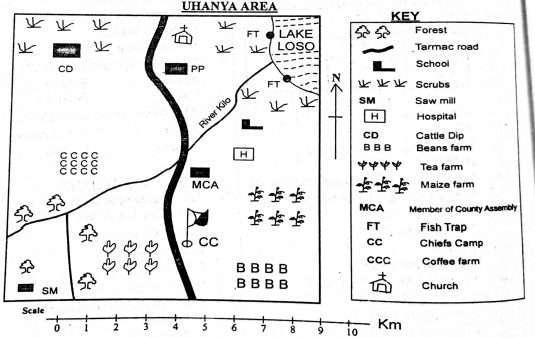
- What is the direction of Saw Mill from the Hospital?
- North East
- South West
- North West
- South East
- What is the main means of transport in Uhanya Area?
- Road
- Railway
- Water
- Air
- Uhanya Area is likely to be a:-
- County
- Senate
- Ward
- Constituency
- Which economic activity is NOT carried out in Uhanya Area?
- Fishing
- Crop farming
- Lumbering
- Mining
- People in Uhanya area are:-
- Pagans
- Muslims
- Christians
- Traditionalists
- Which physical feature is shown below?
- Lake
- Valley
- Plateau
- Plain
- This is a traditional house
It belongs to _________________________ community.- Kamba
- Maasai
- Ameru
- Luo
- On 1st June we celebrate:-
- Jamhuri Day
- Mashujaa Day
- Labour Day
- Madaraka Day
- The point marked S is likely to be
- South West
- South East
- West South
- North West
- Which one of the following is NOT a historic built environment?
- Monument
- Museu
- Mountain
- Historical site
- We depend on _______________________ to make desks and chairs.
- Tailors
- Nurses
- Carpenters
- Teachers
- ___________________________ is the smallest county in Kenya
- Nairobi
- Nakuru
- Mombasa
- Kisumu
- A list of activities carried out in a school everyday is called school _____________________________
- routine
- motto
- history
- core value
- Which type of trade involves the use money?
- Currency trade
- Barter trade
- Exchange trade
- Money trade
- Which type of settlement is shown below?
- Clustered
- Nucleated
- Sparse
- Linear
- A compass has __________________________________ cardinal points.
- three
- four
- eight
- two
- Which one is NOT an aspect of culture our country?
- Dressing
- Artefacts
- Marriages
- Songs and dance
- Which one is NOT an economic activity
- Trading
- Farming
- Fishing
- Weeding
- Who is the current president of Kenya?
- Uhuru Kenyatta
- Rigathi Gachagua
- Raila Amolo Odinga
- William Ruto
- Every family is headed by a _____________________________.
- child
- grandfather
- mother
- father
D. CHRISTIAN RELIGIOUS ACTIVITIES
- Who among the following was told to go and dip himself in River Jordan?
- Naaman
- Bartimaus
- Lazarus
- Jonah
- Which disciple did Jesus love most?
- Peter
- Mark
- John
- James
- Which wild animals killed the 42 boys who made fun of prophet Elisha?
- Lions
- Snakes
- Bears
- Leopards
- The following are attributes of God except
- Creator
- Love
- Holy
- Ugly
- _____________________ killed a lion with his bare hands.
- Daniel
- Jesus
- Jonah
- Samson
- Who is NOT a member of a nuclear family?
- Father
- Daughter
- Mother
- Aunt
- Which one of the following books is NOT a gospel?
- Luke
- Mark
- Exodus
- John
- King. __________________ wanted Balaam to curse the people of Israel.
- Herod
- Ahab
- Balak
- Saul
- There are _____________________ books in the Old Testament.
- 66
- 36
- 39
- 27
- The best use of leisure time is to:-
- Visit friends
- Visit relatives
- Visit the old
- Watch a christian movie
D. ISLAMIC RELIGIOUS ACTIVITIES
- Which one of the following Surahs warns Muslims against slandering and backbiting?
- Al-Alaq
- Al-Quirish
- Humizah
- Inshirrah
- The surah that was revealed to prophet Muhammad to mention 'read' was
- Lahab
- Swamad
- Al-Fiyl
- Alaq
- The Surah Lahab is also known as the:-
- water
- flames
- soil
- abudance
- We have different duties of the Angels of Allah. Who among them is responsible for wahyi?
- Jibril
- Mikail
- Rwadhar.
- Alid
- None is to be worshipped but Allah, Muhammad is His:-
- Prophet
- Messenger
- Servant
- Son
- The Kalima should be repeatedly recited by:-
- Orphans
- New converts
- All muslims
- Imams
- Who among the following is a recepient of zakkat?
- Traveller
- New convert
- Orphan
- Imams
- Who among the prophets of Allah was given the book of Taurat?
- Nabii Issa (AS)
- Nabii Ibrahim (AS)
- Nabii Dawud (AS)
- Nabii Musa (AS)
- Which one of the following is not an obligatory prayer?
- Fajr
- Dhuhr
- Magharib
- Fitr
- An hypocrite has ________________ sinus.
- three
- four
- two
- one
MARKING SCHEME
CRTART
- B
- B
- A
- D
- D
- B
- C
- D
- A
- C
MUSIC
- B
- D
- C
- B
- A
- B
- D
- C
- A
- B
SOCIAL STUDIES
- B
- A
- C
- D
- C
- C
- B
- D
- A
- C
- C
- B
- A
- A
- D
- B
- B
- D
- D
- D
C.R.E
- A
- C
- C
- D
- D
- D
- C
- C
- C
- C
I.R.E
- C
- D
- B
- A
- B
- B
- B
- D
- A
Integrated Science Questions and Answers - Grade 5 School Based Assessment Opener Exams Term 1 2023 Set 4
A. SCIENCE & TECHNOLOGY
- Three of the following are characteristics
of all living things. Which one is NOT?- They breathe
- They reproduce
- They respond to changes.
- They move from one place to another.
- Oesophagus is also called:-
- Windpipe
- Gullet
- Trachea
- Liver
- The main source of heat energy is:-
- The sun
- jiko
- Gas lamp
- An electric heater
- This animal can be classified as:-
- Fish
- Mammal
- Reptile
- Amphibian
- A _______________________ provides security to human beings.
- horse
- camel
- dog
- lion
- Which one cannot be used to form ashadow?
- stone
- ball
- wood
- glass
- Which one is a protective device while handling small animals?
- vest
- cap
- gloves
- socks
- Which pair of teeth is used to chew food?
- Canine and incissor
- Incissor and premolar
- Molar and canine
- Premolar and molar
- Which part of the digestive system are water and salts absorbed?
- Large intestine
- Small intestine
- Stomach
- Rectum
- The diagram below shows a sense organ for:-
- sight
- hearing
- smell
- tasting
- Which one can be used to transport more water?
- Jerricans
- Buckets
- Dams
- water tankers
- Grade 4 learners put the items in water. Which one did not float?
- stone
- feather
- paper
- plastic plate
- Digestion of food in human beings starts in the:-
- stomach
- mouth
- small intestines
- large intestines
- Which pin fell down last?
- A
- B
- C
- D
- Materials that allow all the light to pass through are called:-
- Opaque objects
- Transparent objects
- Transluscent objects
- Trans - opaque
- Which one is not a state of matter?
- Liquids
- Gases
- Dust
- Solids
- Which one is a harmful non-green plant?
- Yeast
- Penincilin
- Mould
- Mushroom
- Which of the parts of a computer displays the information?
- C.P.U
- Monitor
- Keyboard
- Mouse
- Heat from the sun reaches us through:-
- Radiation
- Conduction
- Convection
- Shining
- Which one does not make environment dirty?
- wind
- pollutant
- perfume
- Air
B. HOMESCIENCE ACTIVITIES
- Which of the following materials cannot be used to make a móp as a cleaning equipment?
- Twigs
- String
- Long grass
- Plastic bottles
- Which one is a legume?
- Sorghum
- Wheat
- Greengram
- Cassava
- Which one cannot be used to make shoes?
- Leather
- Plastic
- Canvas
- Polythene
- Which personal item is used to dry our body after bath?
- Towel
- Blanket
- Handkerchief
- Duster
- When sewing a cloth using a needle, we protect our thumbs using:-
- a pin cushron
- a thimble
- a needle
- a tape measure
- Which fuel is used in the diagram below?
- paraffin
- gas
- firewood
- charcoal
- Which one of the following is NOT needed for good health?
- shelter
- rest
- food
- sleeping the whole day
- Which type of medicine is shown below?
- syrup
- capsule
- tablet-
- injection
- Which one is a communicable disease?
- Tooth ache
- Flu
- Vomiting
- Marasmus
- Paul takes bath in a room in their house. This room is called:-
- Dining room
- Kitchen
- Bathroom
- washroom
- Midday meal is also known as:-
- Lunch
- Supper
- Breakfast
- Dinner
- We should wear gloves when doing First Aid in nose bleeding to:-
- make hands remain clean
- avoid infections
- keep hands warm
- stop bleeding at once
C. AGRICULTURE ACTIVITIES
- Which farm tool is used to level the ground after digging?
- Wheelbarrow
- Rake
- Folk jembe
- Spade
- Which type of soil has the largest air spaces?
- Clay soil
- Loam soil
- Silk soil
- Sandy soil
- Grade 4 learners were told to make a compost manure. Which one they don't need?
- Animal wastes
- Plastic cups
- Dry leaves
- Kitchen wastes
- Which wild animal kills and feeds on poultry birds?
- Mole
- Squirrel
- Mongoose
- Monkey
- Which method conserves water in the soil most?
- mulching
- shading
- irrigation
- prunning
- The removal of excess fruit seedlings from a nursery bed is called:-
- Thinning
- Prunning
- Gapping
- Uprooting
- Fruit tree seedlings can be obtained from the following except:-
- Local nurseries
- Local farms
- Local school
- Natural forests
- What shows that tomatoes are ready for harvesting?
- They fall off.
- They turn dark green.
- They begin to ripe.
- They form dotted spots.
- Which of the following farm tools is used to carry farm produce to the stores?
- Rake
- Wheelbarrow
- Watering can
- File
- Which domestic animal is mainly kept for the production of milk and mutton?
- Dairy cattle
- Sheep
- Chicken
- Fighting
- Grade 5 learners were told to bring the following materials by their Agriculture teacher.
- Dry grass
- Kitchen wastes
- Maize stalks
- Ash
What were they likely to make?- A scarecrow
- A Nursery bed
- A compost manure
- A farmyard manure
D. PHYSICAL AND HEALTH EDUCATION ACTIVITIES.
- Which one of the following games is NOT played for fun and enjoyment?
- Swimming
- Netball
- Skipping rope
- Fighting
- Kneeling and raising the ball behind the head and throwing is called:-
- Chest pass
- Under arm pass
- Bounce pass
- Kneeling overhead throw
- What is the approximate size of the soccer ball for Grade 4 boys?
- Who among the following people uses a whistle in a football match?
- Coach
- Referee
- Goal keeper
- Team manager
- __________________________________ is a game played between two teams that involves hitting a leather ball with a bat.
- Frisbee game
- Rounders
- Hand juggling
- Football
- The diagram shows a playing pitch.
The square marked P is called- Square pitch
- Pitcher's square
- Catcher's square
- Bowler's square
- Which one is NOT an equipment for playing the game of rounders?
- Rounders bat
- Rounders ball
- Rounders helmet
- Rounders post
MARKING SCHEME
SCI&TECH
- D
- B
- A
- C
- C
- D
- C
- D
- A
- A
- D
- A
- B
- D
- B
- C
- C
- B
- A
- D
HOMESCIENCE
- D
- C
- D
- A
- B
- D
- D
- B
- B
- C
- A
- B
AGRICULTURE
- B
- D
- B
- C
- A
- A
- D
- C
- B
- D
- C
PHE
- D
- D
- B
- B
- B
- D
- C
Kiswahili Lugha Questions and Answers - Grade 5 School Based Assessment Opener Exams Term 1 2023 Set 4
Soma mazungumzo yafuatayo kisha ujibu maswali 1 hadi 5.
Polisi: Usijaribu! Unaendesha gari bila taa zote za mbele?
Utingo: Niko hapa Afande. Hujambo mzee?
Polisi: Nimemwita dereva. Sikukuita wewe. Kwa nini anaendesha gari barabara i ilhali halina taa zote za mbele? Tena mnabeba abiria wawili wanaosimama.
Utingo: Lakini afande, hapa pana chui kidogo!
Polisi: Usijaribu! Wewe huna aibu? Unajaribu kumhonga afisa wa polisi!
Dereva: Lakini Afande ....................
Polisi: Sitaki hizo lakini zenu. Nimewakamata wewe na dereva wa gari hil. Twende kwenye kituo cha polisi. Nyinyi mtamweleza hakimu hizo lakini zenu. Ala! Njia ya mwongo ni fupi!
Utingo: Tafadhali ............
Polisi: Abiria wengine shukeni mngojee gari jingine.
Dereva: Tafathali. Tusamehe................
Polisi: Hapana cha tafadhali. Nyinyi abiria wawili mliosimama pia twendeni kwenye kituo cha polisi.
- Utingo ni mtu gani?
- Afisa wa polisi
- Msaidizi wa dereva.
- Abiria.
- Mtu ambaye anachukua nauli
- Watu wangapi walishikwa na Afisa wa polisi?
- Wanne
- Wawili
- Watatu
- Watano
- Hakimu anapatikana wapi kazini?
- Kwenye kituo cha polisi
- Kortini
- Barabarani
- Kwa jela
- Utingo alisema, "hapa pana chai kidogo." maana yake ni:-
- Chai kwa kikombe
- Nauli
- Pesa
- Hongo
- Dereva wa gari alipatikana na hatia ngapi?
- moja
- mitatu
- hakuna
- mawili
Soma kifungu kifuatacho kisha ujibu maswali 6 hadi 11.
Hapo zamani za kale paliishi wazee watatu waliokuw marafiki. Wote walikuwa maskini. Siku moja waliamua kwenda mahali panapoitwa Kaunguni kutafuta mali. Kufika huko ilikuwa ni tabu kwa sababu iliwabidi kupita vijiji vingi na kuvuka jito kubwa sana.
Kwa vile safari ilikuwa ndefu, waliamua kutafuta farasi ili waweze kufika upesi. Kwa bahati mbaya, kila
walikokwenda kutafuta farasi hawakufanikiwa kwa sababu
farasi walikuwa safarini. Basi wazee hao waliendelea na safari mpaka wakafika kwenye kijiji kilichokuwa karibu na lile jito.
Hapa walibahatika kupata farasi watatu ingawa farasi hawa hawakuwa wa kawaida. Farasi hawa wakiwa wakila vyakula tofauti. Wa kwanza alikula nguo za binadamu, wa pili alikula nyama ya binadamu, na wa tatu alikula nyama ya farasi. Kwa hivyo wazee walikuwa na tatizo la kutafuta vyakula vya farasi hawa.
- Wazee hawa watatu walikuwa na uhusiano upi?
- walikuwa matajiri
- Walikuwa wajinga
- Walikuwa wajanja
- Walikuwa maskini
- Safari ya wazee hawa ilikuwa na nia gani?
- Kutafuta farasi
- Kwenda kutafuta utajiri
- Kuvuka jito
- Kuenda Kaunguni
- Farasi wa mwisho alikuwa yupi?
- Aliyekula nguo
- Aliyekula farasi
- Aliyeluka binadamu
- Aliyekuwa mzembe
- Ni farasi yupi alikuwa katikati?
- Alaye watoto
- Mlafarasi
- Mlanguo
- Mlawatu
- Ni kitu gani kilichofanyikia farasi hawa walipovuka mto?
- Waligeuka kuwa wa kawaida
- Walimea pembe
- Walipata mali nyingi
- Walitajirika
- Kichwa kifaacho taarifa hii ni:-
- Juhudi sio pato
- Mchagua jembe si mkulima
- Akili nyingi huondoa maarifa
- Baada ya dhiki ni faraja
Jaza mapengo kwa kutumia jibu bora zaidi kutoka nambari 12 hadi 16.
Dawa___12___ kulevya hutumiwa na baadhi ya watu na kufanya kuonekana kama 13. Miongoni ___14___dawa hizi ni kama vile bangi, aina fulani ya ___15___ za kumeza na dawa fulani za ___16___kwa sindano.
| A | B | C | D | |
| 12. | ya | la | za | cha |
| 13. | welevu | warefu | waolevi | walevi |
| 14. | kwa | ya | mwa | pa |
| 15. | tembe | tembo | mawe | muitingoi |
| 16. | kutunga | kuchoma | kuweko | kujidunga |
Kutoka nambari 17 hadi 30, jibu kulingana na maagizo.
- Neno "kifaru" iko katika ngeli ipi?
- I - ZI
- KI - VI
- U - ZI
- A - WA
- Umbo hili huitwa?
- Mraba
- Mstatili
- Duara
- Mche
- Rafiki _____________________________ amefika.
- wangu
- yangu
- langu
- changua
- Anayejenga kwa mawe huitwa _______________________________
- mwashi
- sonara
- seremala
- mhunzi
- Humusi huandikwaje?
- 1/5
- 1/6
- ¼
- 1/8
- Andika wingi wa:-
"Uso mfupi"- Macha mafupi
- Mauso fupi
- Nyuso fupi
- Nyuso mfupi
- Msimu wa baridi kali bila mvua huitwa:-
- Kiangazi
- Vuli
- Masika
- Kipupwe
- Samaki ___________________________ ni wakubwa sana.
- hizo
- hao
- zile
- hio
- Aliandika barua ____________________________ kalamu ya wino.
- na
- kwa
- la
- cha
- Kitenzi "cheka" katika hali ya kutendewa ni:-
- Chekwa
- Chekelewa
- Chekea
- Chekewa
- _________________________________ niazime kalamu yako, yangu imepotea.
- Pole
- Tafadhali
- Samahani
- Niwie radhi
- Pesa anazolipa abiria yeyote ni:-
- faini
- karo
- nauli
- kiingilio
- Tunapita mtihani _______________________ tulifanya bidii.
- na
- pia
- lakini
- kwa sababu
- Simu ya mkono huitwa? ____________________________
- Runinga
- Rununu
- Sare
- Kompyuta
INSHA
Andika insha ya kusisimua kuhusu
SHULE YETU
MARKING SCHEME
- D
- A
- B
- D
- D
- D
- B
- B
- D
- A
- D
- C
- D
- C
- A
- D
- D
- B
- B
- A
- A
- C
- D
- C
- B
- B
- B
- C
- D
- B
English Questions and Answers - Grade 5 School Based Assessment Opener Exams Term 1 2023 Set 4
Read the conversation below and then answer questions 1-5.
Peter: Hello Winnie! How are you doing?
Winnie: Hallo Peter! Am very fine. How about you?
Peter: Oh! I am quite well and healthy.
Winnie: Wah! You look "handsome"
Peter: Thank you for your observation. I heard that your mother was admitted? How is she feeling now?
Winnie: She is now improving. Infact my father has gone to discharge her today. All will be well.
Peter: God is great! I told my mother about it and she allowed me to come and say sorry to all of you.
Winnie: I am very greatful for your kindness to us. "Will you be ok with warm or cold fruit juice?"
Peter: Warm can do because it is cold. Thanks alot.
Winnie: Welcome!
- Where do you think Peter and Winnie were?
- In school
- In the hospital
- At Winnie's home
- At Peter's home
- What is likely to be the opposite of the word "handsome" as used in the conversation?
- Beatiful
- Kind
- Ugly
- Pretty
- How many peole are mentioned in the conversation above?
- five
- four
- three
- twO
- Winnie serve Peter with:-
- Warm tea
- Cold fruit juice
- Hot fruit juice
- Warm fruit juice
- Which polite word did Winnie say at the end of the conversation?
- Thank you!
- Hallo!
- Good bye!
- Welcome!
Read the passage below and then answer questions 6 - 13.
Once upon a time, there lived a naughty boy called Ury. The boy was so naughty that he never listened to anybody. Although the boy was naughty, he was very good in making friends. He made friendship even with people he did not know. His parents warned him against such behaviours but he did not change at all.
One day on his way to school, he met an Ogre. Since he was not afraid of strangers he stood to greet the Ogre. He did not know it was an Ogre. The Ogre was very happy because it had not eaten for the past three days. As he was talking to the Ogre, it could catch the flies and eat them. He could not notice this for it had another mouth at the back of the head.
The Ogre told the boy to follow him for sweets. He was taken to a dark cave and before he discovered the trick he had been turned into a tasty meal.
- Long ago there lived a ____________________________________ boy.
- good
- foolish
- wise
- naughty
- The boy could do the following except
- talk
- listen
- sleep
- dance
- The boy was good at making:-
- enemies
- noise
- songs
- friends
- The boy was _________________________________ by his parents.
- carried
- abused
- warned
- threatened
- Where was the boy going to when he met the Ogre?
- School
- Market
- Cave
- River
- Which statement is wrong about an Ogre?
- It ate flies.
- It was handsome
- It had two mouths
- It ate the naughty boy
- A person you don't know is known as a ___________________________________________________
- an Ogre
- visitor
- stranger
- naughty
- The Ogre had promised, ______________________________ to the boy.
- Fruits
- Honey
- Sweets
- Tasty meal
- The best title for this story is:-
- The sweets
- A day to school
- The Ogre
- The boy and the Ogre
Fill the blank spaces numbered 15-19 with the correct words below.
A thief ___15___ into ___16___ house. It was dark inside as he made___17___ way ___18___ the sitting room ___19___ the dining room and the store.
| A | B | C | D | |
| 15. | break | broke | broken | breaking |
| 16. | a | an | much | few |
| 17. | their | they | his | them |
| 18. | above | over | under | through |
| 19. | into | on | at | for |
For questions 20-30, answer according to instructions.
- The patient died ______________________________ malaria.
- with
- from
- of
- for
- Purity is the ______________________________ girl in Grade four.
- beautiful
- more beautiful
- most beautiful
- most beauty
- Write the plural form of the underlined word.
Our chief was given a gum.- chiefs
- chieves
- chiefes
- chief
- The two teachers shared the gifts _____________________________ themselves equally.
- among
- between
- for
- with
- Bondeni primary school __________________________ hardly number one in the sub county.
- are
- will
- were
- is
- Grade 5 learners bought a hen for the project. The hen is:-
- there's
- they
- thems
- theirs
- Which animal does not fit in the group?
- Cock
- Ram
- Bull
- Ewe
- What is the opposite of the underlined word in the sentence?
The month of March is usually a wet month in Limuru.- cool
- hot
- dry
- warm
- A young child cannot drink hot tea, _______________________?
- does she
- can she
- can't she
- doesn't she
- As black as __________________________
- darkness
- hair
- coal
- death
- Choose a similar word for the underlined word in the sentence.
The little girl aided her sick mother.- helped
- called
- treated
- praised
COMPOSITION
Write an interesting composition about
MY JOURNEY TO THE VILLAGE
MARKING SCHEME
- C
- C
- A
- D
- D
- D
- B
- D
- C
- A
- B
- C
- C
- D
- B
- A
- C
- D
- A
- C
- C
- A
- B
- D
- D
- D
- C
- B
- C
- A




